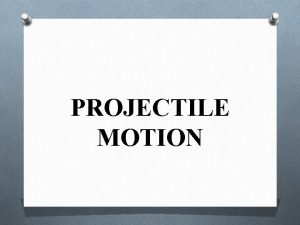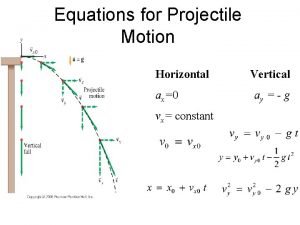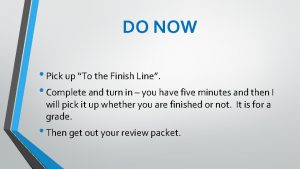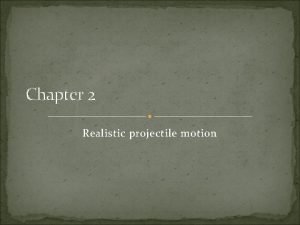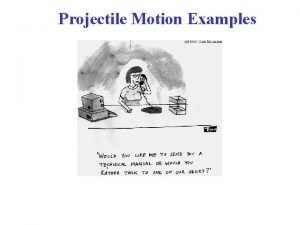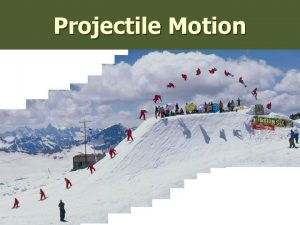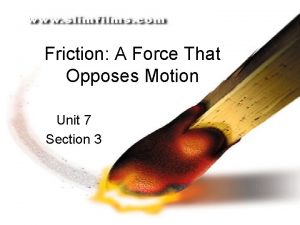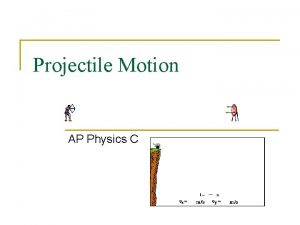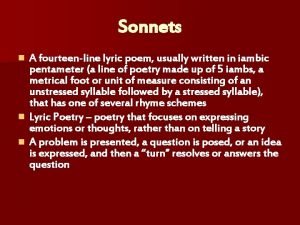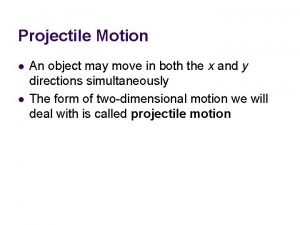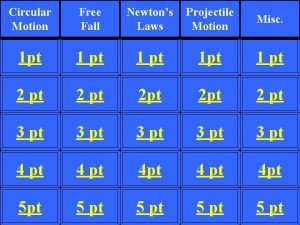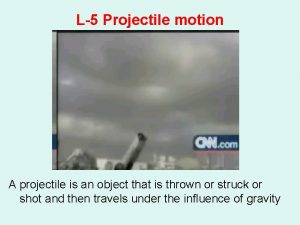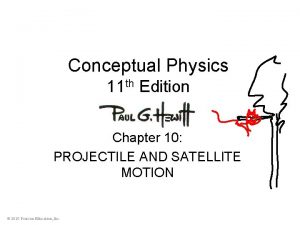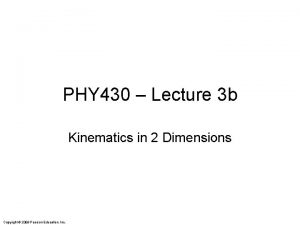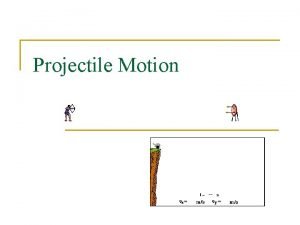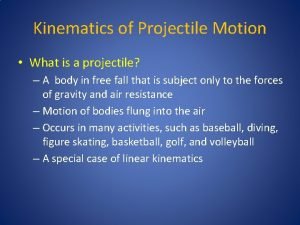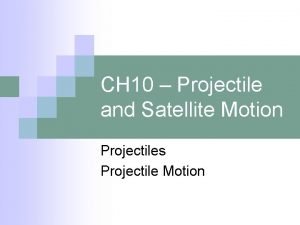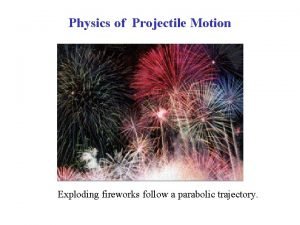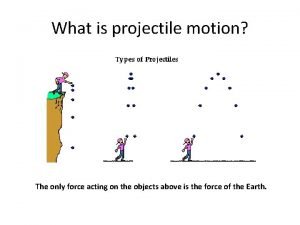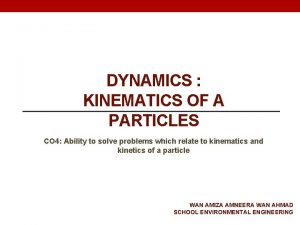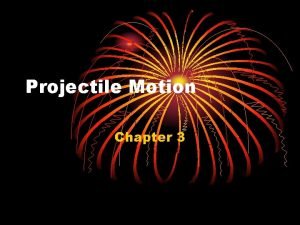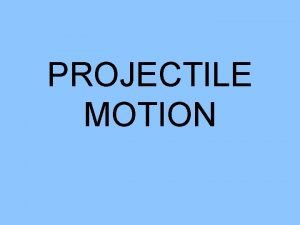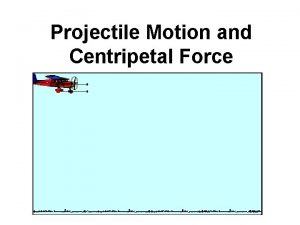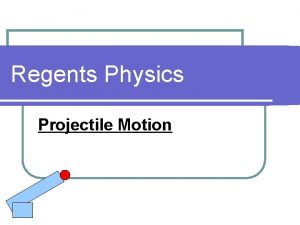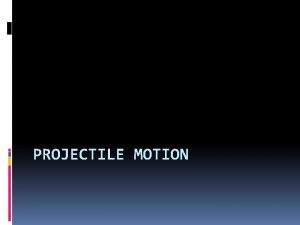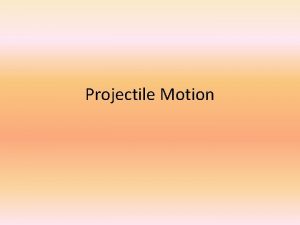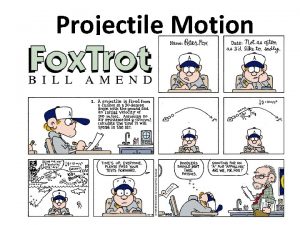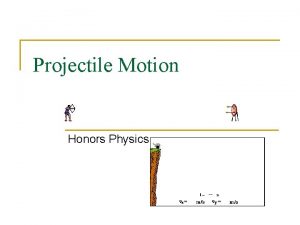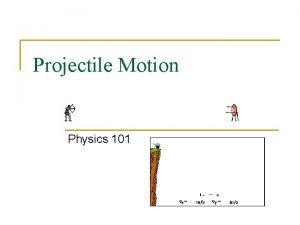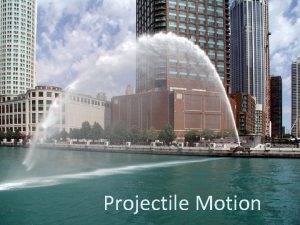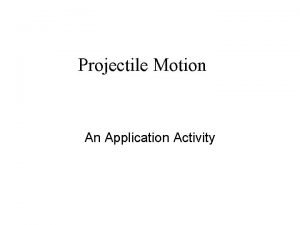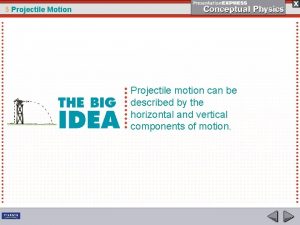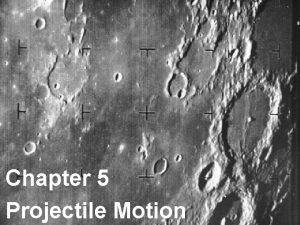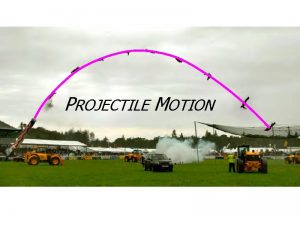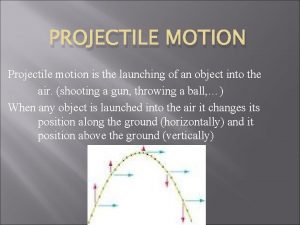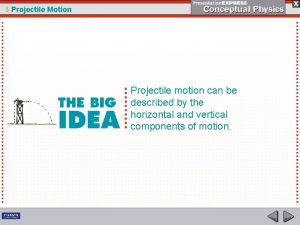Projectile Motion 3 2 The Components of a



























- Slides: 27

Projectile Motion


3 -2 The Components of a Vector Even though you know how far and in which direction the library is, you may not be able to walk there in a straight line:

3 -2 The Components of a Vector Can resolve vector into perpendicular components using a two-dimensional coordinate system:

3 -2 The Components of a Vector Length, angle, and components can be calculated from each other using trigonometry:

3 -2 The Components of a Vector Signs of vector components:

3 -3 Adding and Subtracting Vectors Adding vectors graphically: Place the tail of the second at the head of the first. The sum points from the tail of the first to the head of the last.

3 -6 Relative Motion The speed of the passenger with respect to the ground depends on the relative directions of the passenger’s and train’s speeds:

3 -6 Relative Motion This also works in two dimensions:

Vector Components y v 90° vy θ vx x SOH CAH TOA

Equations Of Motion • Velocity as a function of time vf = vi + at • Average Velocity vavg = (vf +vi) / 2 • Position as a function of time xf = xi + vit + ½ at 2 • Velocity in terms of Displacement vf 2 = vi 2 + 2 a(xf - xi)

• A geologist observes a volcano shoot a lava bomb and finds that it takes 4. 75 s for that lava bomb to go straight up and then back down to its original launch height. What is its initial speed? Then draw three graphs showing the position, velocity, and acceleration as a function of time.

What we know? • • • t = 4. 75 s a= -9. 8 m/s 2 xi = 0 xi = xf Vi = ? Which equation of motion do we use? • vf = vi + at • vavg = (vf +vi) / 2 • xf = xi + vit + ½ at 2 • vf 2 = vi 2 + 2 a(xf - xi)

x v t t a t

Question • A soccer ball is kicked at an angle of 35° from the ground. If the velocity of the ball is 20 m/s, compute the horizontal and vertical velocities of the ball at the instant of kick.

Answer


4 -3 Zero Launch Angle Launch angle: direction of initial velocity with respect to horizontal


• Gravity free

• Fast

• Slow


4 -5 Projectile Motion: Key Characteristics Range: the horizontal distance a projectile travels If the initial and final elevation are the same:

Range • Range = (vi 2/g) sin 2θ • What angle = maximum range? • When sin 2θ =1, so since sin 90 =1 • Θ = 45

Marble Catch Lab • Obj: Predict the landing spot of a projectile launched horizontally from an elevated platform. • Materials: incline, marble, stopwatch, meter stick • IMPORTANT: The marble must never leave the table when taking data. Only when you are ready to shoot for your grade will the ball be allowed to land on the floor.

Procedure • 1. Roll the steel ball down the ramp several times, recording the necessary data to determine the average speed at which it will be launched horizontally off the table. 2. Take any measurements needed to calculate the time of free fall for the projectile to hit the floor. 3. Using the launch velocity and calculated time, predict by calculation the landing spot of your projectile. Measure this calculated distance from a spot on the floor directly below the edge of the table. Place the target sheet at this position, making sure the ball’s velocity vector is aligned with the center of the paper. 4. Call over the physics teacher before firing the projectile for your grade. The target sheet gives your grade.
 Importance of projectile motion in our daily life
Importance of projectile motion in our daily life What are two components of projectile motion
What are two components of projectile motion Projectile motion diagram
Projectile motion diagram Meaning of projectile motion
Meaning of projectile motion Projectile motion equations
Projectile motion equations Law of reaction in physical education
Law of reaction in physical education Projectile motion examples
Projectile motion examples Which describes an object in projectile motion?
Which describes an object in projectile motion? A force that opposes motion of a projectile
A force that opposes motion of a projectile Vertical projectile motion
Vertical projectile motion Physics c
Physics c Poem about projectile motion
Poem about projectile motion Gerak parabola pada bidang miring
Gerak parabola pada bidang miring Maximum height
Maximum height Projectile motion
Projectile motion A child sits upright in a wagon which is moving
A child sits upright in a wagon which is moving Projectile motion
Projectile motion Chapter 10 projectile and satellite motion tossed ball
Chapter 10 projectile and satellite motion tossed ball Projectile motion equations
Projectile motion equations Table 2.1.3 horizontal motion description
Table 2.1.3 horizontal motion description Relative projection height
Relative projection height Projectile motion ball
Projectile motion ball Fly-in
Fly-in The only force acting on a projectile is
The only force acting on a projectile is The motion of a projectile is often studied in terms of
The motion of a projectile is often studied in terms of Is projectile motion a scalar or vector
Is projectile motion a scalar or vector Projectile motion animation
Projectile motion animation Golf ball x tennis ball
Golf ball x tennis ball
